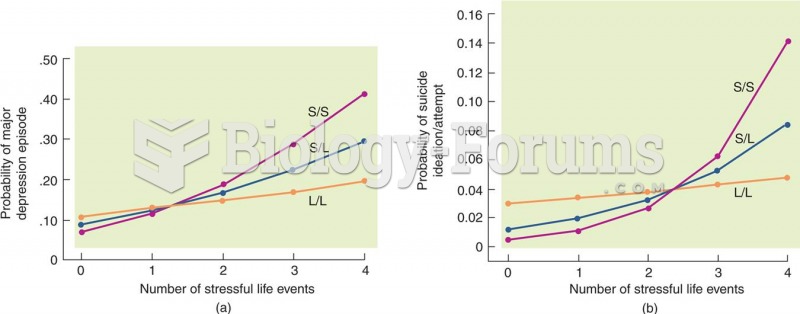Answer to Question 1
Human research led Holmes and Rahe to create an instrument called the Social Readjustment Rating Scale (SRRS) to determine if there is a predicted relationship between stress and illness in humans. The SRRS conceptualizes stressors as positive or negative life events that require adaptation or adjustment. In developing the instrument, each life event on the scale was assigned a number of life change units (LCUs) based on the mean participant ratings of their experiences with the events.
After ranking the items, the highest ranked item, Death of a spouse was given the top score of 100 and all subsequent items were scored in descending order of intensity. Most of the items on the resulting scale are low-to- moderate intensity stressors, examples of which include Change in church activities, Change in eating habits, and Revision of personal habits. In keeping with Selye's concept of negative and positive stress, some events are positive. An example is the seventh ranked event of Marriage.
Answer to Question 2
Meta-analytic studies use statistical procedures that find the average effect size, an indicator of the strength of the relationship between the independent variables on the dependent variables. Effect sizes in meta-analytic studies are often reported as correlation coefficients though other statistics may be used instead. For r, a small effect size is in the range of .10, a medium effect size is around .30, and a large effect size is .50 or greater. Effect sizes may also be reported as standard deviation units. As a general reference, consider that one-half a standard deviation unit is considered a medium effect size and one standard deviation unit is generally regarded as a high medium-to-large effect size.
Although there are some poor meta-analytic studies because of lax inclusion standards, in general, the investigators who conduct meta-analyses usually attempt to screen out poor methodological studies and include only the higher quality ones. Thus, we get relatively stable indicators of the effects of particular causal variables. When studying the relationship between stress and illness, as well as stress and health in general, the meta-analytic strategy gives us a great advantage in furthering our understanding. Therefore, special attention is given throughout this book to meta-analytic studies.







